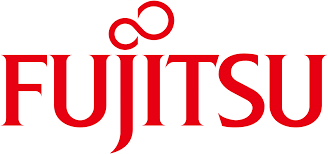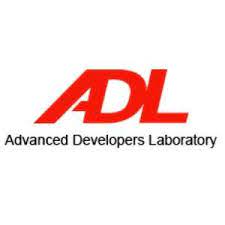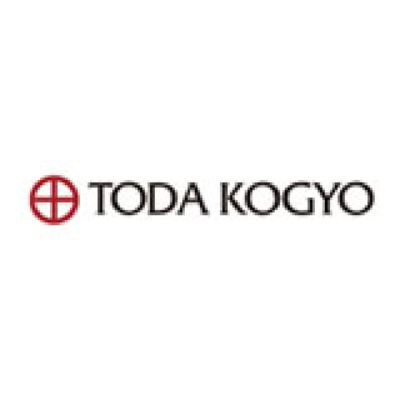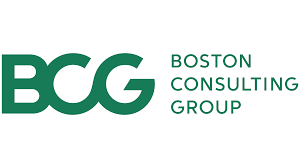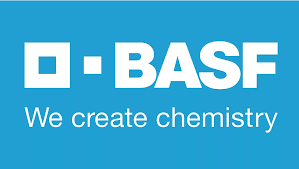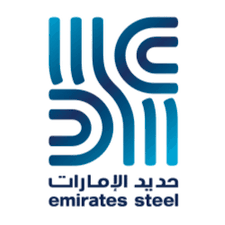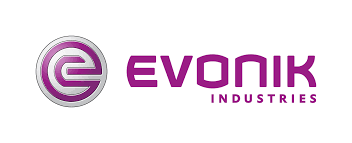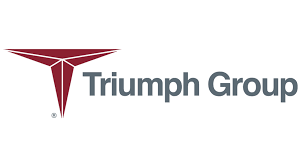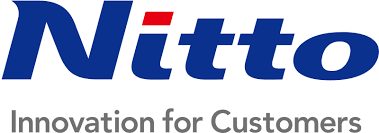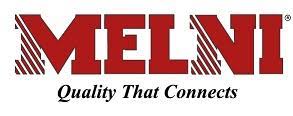Global Propulsion system Market Size, Share & Trends Analysis Report By Type, By Packaging, By Region, and Segment Forecasts, 2023 - 2030
- Report Summary
- Table of Contents
- Segmentation
- Methodology
- Download Sample
A propulsion system is a device that uses Newton's third law of action and reaction to create a propelling or driving force to drive an item ahead. The push produced by the propulsion systems is utilized to accelerate both natural and manmade satellites. Air breathing and non-air breathing are the two basic categories of propulsion technologies. When someone breathes air, they use oxygen from the atmosphere to burn fuel. In missiles, aircraft, spacecraft, and unidentified aerial vehicles, the propulsion system is frequently used.
Recently government across world encourage the use of electric vehicles and alternative fuels, several countries were putting plans into action. To promote the production and purchase of electric automobiles, buses, and trucks, governments offered incentives such tax credits, subsidies, and rebates. The advancement of battery technology and charging infrastructure also supported by funding for research and development. For instance, in June 2023 Safran SA signed an agreement with Electra to develop 600 kW electric turbogenerator propulsion system for the prototype of Electra’s nine-passenger hybrid-electric short takeoff and landing (eSTOL) aircraft.
The Global Propulsion System Market was valued around US $ 10.21 BN in 2022 and is expected to reach US $19.76 BN by 2030 with a CAGR of 12.45% during the forecast period.
Factors Driving the Market
Drivers
Rising demands from automotive & Military vehicles
The propulsion system industry has grown and developed largely as a result of the increasing demand from the automotive and military vehicle sectors. To fulfil the demands of these industries, there has been a rise in research, development, and implementation of sophisticated propulsion technology. The adoption of electric vehicles has been prompted by the rising need for greener, more energy-efficient transportation. government and various institution focusing towards environment protection and dependency on fossil fuel. As a result, the automobile industry across world moves toward designing and manufacturing hybrid & electric vehicles. For instance, in 2021, American Axle & Manufacturing (AXL.N), one of the automobile parts manufacturers entered into partnership with REE Automotive, based in Israel develop an electric propulsion system to tap accelerating demand for battery-powered vehicles. It integrates all the traditional vehicle chassis components into the arch of the wheel.
In line with the trends in the automotive sector, military forces are also exploring electric and hybrid propulsion systems to reduce dependence on traditional fossil fuels. These systems offer features like reduced noise signatures, improved stealth capabilities, and increased operational efficiency. For instance, General Motors through its subsidiary GM Defense focusing on advanced defense mobility needs & selected by the Defense Innovation Unit (DIU) to develop a battery pack that can be used for functional electric military vehicles.
Challenges
High development costs, stringent regulations
The global propulsion system market faces restraints like huge development costs, strict regulations, technological challenges, limited infrastructure, resistance to change, market fragmentation, uncertain ROI, dependency on finite resources, public perception hurdles, economic fluctuations, competition from conventional technologies, and geopolitical factors. The propulsion system market continues to evolve as companies, governments, and researchers work to overcome these challenges through collaboration, innovation, and strategic planning. The propulsion system market is highly fragmented, with numerous players and technologies vying for dominance. Public perception hurdles are significant in influencing technology adoption. Misconceptions about safety, reliability, or environmental impact can deter potential users from adopting advanced propulsion technologies. Building public trust through transparent communication and demonstration of the technology's benefits is essential in overcoming these hurdles.
Other challenges include highly competition, infrastructure issue, rapid changing in the advancement of technology, economic fluctuation.
Trends
Step towards electrification and hybridization
The propulsion system market is witnessing a significant shift towards electrification and hybridization These systems offer improved efficiency, reduced emissions, and enhanced performance, driven by advancements in battery technology and power electronics Electric and hybrid propulsion technologies are being increasingly adopted in various sectors, including automotive, aerospace, and maritime. For instance, in November 2020, the NASA outfitted the DART spacecraft with a Next-Gen technology demonstration propulsion system called NEXT-C (NASA’s Evolutionary Xenon Thruster-Commercial) ion propulsion system.
Propulsion systems are evolving as a result of the incorporation of digital technology and artificial intelligence (AI), in order to satisfy the needs of autonomous and unmanned vehicles, both in the air and on the ground. A bridge between conventional and fully electric technologies, hybrid propulsion systems combine conventional internal combustion engines with electric motors and batteries. Hybrid cars can travel short distances on electricity, which lowers their need for fuel and their emissions when commuting. This strategy is especially tempting for bigger vehicles like trucks and buses when all-electric solutions can be constrained by the size and weight of the batteries.
Other trends include international partnership & collaboration, digitalization and AI integration, autonomous and unmanned vehicles.
Market Segmentation
By Type
Based on type, the market is divided into air breathing engines, non-air breathing engines, electric propulsion engines. air breathing engines led the global propulsion system market in 2022 and is expected to continue to lead the market during the forecast period. This segment contributed around XX% in 2022. The demand for air breathing engines is rising due to the rise in government initiatives to shift toward clean energy sources and growing awareness towards environment protection. Furthermore, aircraft and various missiles uses air breathing engines that offers maximum speed with proper accuracy and also required less fuel as compared to other engine.
electric propulsion engines will be the fastest growing segment during the forecast period with a CAGR of around XX%, owing to Electric propulsion is becoming more practical and efficient because to developments in battery technology. The energy density and charging capacities of lithium-ion batteries in particular have significantly increased, enabling electric vehicles and other electric propulsion systems to have greater ranges and quicker charging periods.
By Application
Based on application, the market is divided into aircraft, spacecraft, missiles, unmanned aerial vehicles. The aircraft segment led the global propulsion system market in 2022 and is expected to continue to lead the market during the forecast period. This segment contributed around XX% in 2022. This segment is rise due to rising air travel and the requirement for global connectivity. The demand for lightweight aircraft engines with high fuel efficiency, durability to withstand harsh weather conditions, optimal thrust output, and minimal maintenance schedules with quick turnaround time is anticipated to fuel the growth of the aircraft segment of the market.
By Regions
By geography the market is divided into the North America, Europe, APAC, and others. North America led the propulsion system market in 2022 with the market share of around XX%. Increased awareness, affordability and accessibility of the propulsion system in the U.S are the prime factors for the high market share of North America region. Moreover, economic growth, expansion of the commercial & military aviation, and increase in the number of space expeditions are factors driving the growth of market.
Europe will be the fastest growing region during the forecast period with a CAGR of around XX% due to the ongoing research efforts by different industry to develop new propulsion system. Furthermore, encouraging government attempts to reduce carbon emissions, this region has also seen an increase in the adoption of green fuel alternatives and related technology. Moreover, expansion of defense command in this region has further driven demand for military transport aircraft, that has fueled the demand of propulsion systems in the European region.
Competitive Landscape
The global propulsion system market is concentrated with only two players with approved propulsion system present in the market namely Safran SA and General Electric.
Safran SA is a leading aerospace and defense company in France. Its operations span across aircraft propulsion, aircraft equipment, avionics, defense systems, and space-related technologies. In May 2023, it delivered first LEAP-1A propulsion systems (engines and nacelles) for the A320neo to Airbus the, integrated in its new Tianjin (China) site. Tianjin is Safran’s fourth nacelle integration site, after Toulouse (France), Hamburg (Germany) and Mobile (Alabama, USA). Located in the Tianjin Free Zone near Airbus' A320neo Final Assembly Line (FAL).
General Electric (GE) is a multinational company in US. In June 2023, General Electric (GE) through its subsidiary GE Aerospace in partnership with Boeing and its subsidiary Aurora Flight Sciences developed design for the aircraft test bed for NASA’s Electrified Powertrain Flight Demonstration (EPFD) project
Companies Developing Propulsion system and in Trial Phase
- United Technologies Corporation (UTC) – United Technologies Corporation (UTC) is US base company that offers technology products and services to various industries. It is one of the prominent players the aerospace industry, producing engines for commercial and military aircraft, as well as providing advanced systems and components for aviation applications.
- Rolls Royce holdings plc– In 2029, Rolls-Royce developed and tested hybrid electric propulsion system for air taxis general aviation aircraft and helicopters in Indianapolis, US. The M250 hybrid is planned to be used as a propulsion plant with power ranging from 500kW to 1MW across a range of platforms to enable distributed electric propulsion.
- Honeywell International Inc.– Honeywell launched European Clean Aviation project named as project NEWBORN that develop a new generation of hydrogen fuel cells for the aviation industry. Through this project it develops an aerospace-qualified megawatt-class fuel cell propulsion system powered by hydrogen.
- Northrop Grumman– Recently, Northrop Grumman Corporation expanded and opened a Hypersonic Capability Center (HCC) in Elkton, Maryland to produce advanced propulsion solutions that power hypersonic missiles. Furthermore in 2021, NASA select it to provide solid propulsion systems and controls for NASA’s Mars Ascent Vehicle (MAV).
- Raytheon corporation (RTX)– RTX awarded a contract from Naval Air Systems Command in June 2023, to developed & supply materials, parts, and components for the 17th lot of F135 Propulsion system for F-35 Lighting II Joint Strike Fighter aircraft. Its Hybrid-electric propulsion technology offers significant potential to optimize efficiency across a range of different aircraft applications.
- GKN Aerospace– GKN Aerospace partnered with IAAPS to partner on development of hydrogen propulsion systems for aviation. This move further drive investment in infrastructure for delivery of gaseous and liquid hydrogen and development of cryogenic cooling systems.
Recent Developments
- January 4, 2023: Raytheon corporation run the engine it is developing for its hybrid-electric regional flight demonstrator. The hybrid-electric propulsion system’s first run took place at Pratt & Whitney’s (P&W) innovation facility in Longueuil, Quebec and the engine performed as expected, reported the company.
- August23 2023: Northrop Grumman Expanded it service and started new hypersonic propulsion factory in Elkton. Northrop provides the air-breathing scramjet propulsion system & warheads for HACM to its prime contractor, Raytheon.
Propulsion system Market Scope
| Report Components | Details |
|---|---|
| Base Year | 2022 |
| Forecast Period | 2023 – 2030 |
| Quantitative Units | Revenue in US $ |
| Drivers |
|
| Challenges |
|
| Trends |
|
| Segments Covered | Type (Air Breathing Engines, Non-Air Breathing Engines, Electric Propulsion Engines), Application (Aircraft, Spacecraft, Missiles, Unmanned Aerial Vehicles) |
| Countries Covered | U.S. and Canada in North America, Germany, France, U.K., Netherlands, Switzerland, Belgium, Russia, Italy, Spain, Turkey, Rest of Europe in Europe, China, Japan, India, South Korea, Singapore, Malaysia, Australia, Thailand, Indonesia, Philippines, Rest of Asia-Pacific (APAC) in the Asia-Pacific (APAC), Saudi Arabia, U.A.E, South Africa, Egypt, Israel, Rest of Middle East and Africa (MEA) as a part of Middle East and Africa (MEA), Brazil, Argentina, Mexico and Rest of South America as part of South America |
| Market Players Covered | Safran SA, General Electric |
Table of Contents
1 Introduction
1.1 Research Scope
1.2 Market Segmentation
1.3 Research Methodology
2 Executive Summary
3 Market Dynamic
3.1 Market Drivers
3.2 Market Restraints
3.3 Market Opportunities
4 Key Insights
4.1 Number of Major Developments on Propulsion systems Performed in Key Countries, 2021/2022
4.2 New Product Launches, By Key Players
4.3 Key Industry Developments
4.4 Impact of COVID-19 on the Propulsion systems Market
4.5 Regulatory & Reimbursement Scenario, By Key Countries
5 Global Propulsion systems Market Analysis, Insights and Forecast, 2019-2030
5.1 Market Analysis, Insights and Forecast – By Type
5.1.1 Air Breathing Engines
5.1.2 Non-Air Breathing Engines
5.1.3 Electric Propulsion Engines
5.2 Market Analysis, Insights and Forecast – By Application
5.2.1 Aircraft
5.2.2 Spacecraft
5.2.3 Missiles
5.2.4 Unmanned Aerial Vehicles
5.5 Market Analysis, Insights and Forecast – By Region
5.5.1 North America
5.5.2 Europe
5.5.3 Asia Pacific
5.5.4 Latin America
5.3.5 Middle East & Africa
6... North America Propulsion systems Market Analysis, Insights and Forecast, 2019-2030
6.1 Market Analysis, Insights and Forecast – By Type
6.1.1 Air Breathing Engines
6.1.2 Non-Air Breathing Engines
6.1.3 Electric Propulsion Engines
6.2 Market Analysis, Insights and Forecast – By Application
6.2.3 Missiles
6.2.4 Unmanned Aerial Vehicles
6.3 Market Analysis, Insights and Forecast – By Country
6.3.1 U.S.
6.3.1.1 By Type
6.3.2 Canada
6.3.2.1 By Type
7... Europe Propulsion systems Market Analysis, Insights and Forecast, 2019-2030
7.1 Market Analysis, Insights and Forecast – By Type
7.1.1 Air Breathing Engines
7.1.2 Non-Air Breathing Engines
7.1.3 Electric Propulsion Engines
7.2 Market Analysis, Insights and Forecast – By Application
7.2.1 Aircraft
7.2.2 Spacecraft
7.2.3 Missiles
7.2.4 Unmanned Aerial Vehicles
7.3 Market Analysis, Insights and Forecast – By Country
7.3.1 Germany
7.3.1.1 By Type
7.3.2 U.K.
7.3.2.1 By Type
7.3.3 France
7.3.1.1 By Type
7.3.4 Italy
7.3.4.1 By Type
7.3.5 Spain
7.3.5.1 By Type
7.3.6 Scandinavia
7.3.6.1 By Type
7.3.7 Rest of Europe
7.3.7.1 By Type
8... Asia Pacific Propulsion systems Market Analysis, Insights and Forecast, 2019-2030
8.1 Market Analysis, Insights and Forecast – By Type
8.1.1 Air Breathing Engines
8.1.2 Non-Air Breathing Engines
8.1.3 Electric Propulsion Engines
8.2 Market Analysis, Insights and Forecast – By Application
8.2.1 Aircraft
8.2.2 Spacecraft
8.2.3 Missiles
8.2.4 Unmanned Aerial Vehicles
8.3 Market Analysis, Insights and Forecast – By Country
8.3.1 China
8.3.1.1 By Type
8.3.2 India
8.3.2.1 By Type
8.3.3 Japan
8.3.1.1 By Type
8.3.4 Australia
8.3.2.1 By Type
8.3.5 Southeast Asia
8.3.1.1 By Type
8.3.6 Rest of Asia Pacific
8.3.2.1 By Type
9... Latin America Propulsion systems Market Analysis, Insights and Forecast, 2019-2030
9.1 Market Analysis, Insights and Forecast – By Type
9.1.1 Air Breathing Engines
9.1.2 Non-Air Breathing Engines
9.1.3 Electric Propulsion Engines
9.2 Market Analysis, Insights and Forecast – By Application
9.2.1 Aircraft
9.2.2 Spacecraft
9.2.3 Missiles
9.2.4 Unmanned Aerial Vehicles
9.3 Market Analysis, Insights and Forecast – By Country
9.3.1 Brazil
9.3.1.1 By Type
9.3.2 Mexico
9.3.2.1 By Type
9.3.3 Rest of Latin America
9.3.1.1 By Type
10. Middle East & Africa Propulsion systems Market Analysis, Insights and Forecast, 2019-2030
10.1 Market Analysis, Insights and Forecast – By Type
10.1.1 Air Breathing Engines
10.1.2 Non-Air Breathing Engines
10.1.3 Electric Propulsion Engines
10.2 Market Analysis, Insights and Forecast – By Application
10.2.1 Aircraft
10.2.2 Spacecraft
10.2.3 Missiles
10.2.4 Unmanned Aerial Vehicles
10.3 Market Analysis, Insights and Forecast – By Country
10.3.1 GCC Countries
10.3.1.1 By Type
10.3.2 South Africa
10.3.2.1 By Type
10.3.3 Rest of Middle East & Africa
10.3.1.1 By Type
11. Competitive Analysis
11.1 Global Market Share Analysis (2022)
11.2 Company Profiles (Overview, Products, SWOT analysis, Recent developments, strategies, financials (based on availability))
11.2.1 Safran SA
11.2.1.1 Overview
11.2.1.2 Products
11.2.1.3 SWOT analysis
11.2.1.4 Recent developments
11.2.1.5 strategies
11.2.1.6 financials (based on availability)
11.2.2 General Electric
11.2.2.1 Overview
11.2.2.2 Products
11.2.2.3 SWOT analysis
11.2.2.4 Recent developments
11.2.2.5 strategies
11.2.2.6 financials (based on availability)
11.2.3 United Technologies Corporation (UTC)
11.2.3.1 Overview
11.2.3.2 Products
11.2.3.3 SWOT analysis
11.2.3.4 Recent developments
11.2.3.5 strategies
11.2.3.6 financials (based on availability)
11.2.4 Rolls Royce plc
11.2.4.1 Overview
11.2.4.2 Products
11.2.4.3 SWOT analysis
11.2.4.4 Recent developments
11.2.4.5 strategies
11.2.4.6 financials (based on availability)
11.2.5 Honeywell International Inc
11.2.5.1 Overview
11.2.5.2 Products
11.2.5.3 SWOT analysis
11.2.5.4 Recent developments
11.2.5.5 strategies
11.2.5.6 financials (based on availability)
11.2.6 Northrop Grumman
11.2.6.1 Overview
11.2.6.2 Products
11.2.6.3 SWOT analysis
11.2.6.4 Recent developments
11.2.6.5 strategies
11.2.6.6 financials (based on availability)
11.2.7 Raytheon corporation (RTX)
11.2.7.1 Overview
11.2.7.2 Products
11.2.7.3 SWOT analysis
11.2.7.4 Recent developments
11.2.7.5 strategies
11.2.7.6 financials (based on availability)
11.2.8 GKN Aerospace
11.2.8.1 Overview
11.2.8.2 Products
11.2.8.3 SWOT analysis
11.2.8.4 Recent developments
11.2.8.3 strategies
11.2.8.6 financials (based on availability)
11.2.9 Space Exploration Technology Corporation
11.2.9.1 Overview
11.2.9.2 Products
11.2.9.3 SWOT analysis
11.2.9.4 Recent developments
11.2.9.5 strategies
11.2.9.6 financials (based on availability)
11.2.10 Moog Inc.
11.2.10.1 Overview
11.2.10.2 Products
11.2.10.3 SWOT analysis
11.2.10.4 Recent developments
11.2.10.5 strategies
11.2.10.6 financials (based on availability)
Global Propulsion system Market Segmentation
Propulsion system By Technology: Market Size & Forecast 2023-2030
- Air Breathing Engines
- Non-Air Breathing Engines
- Electric Propulsion Engines
Propulsion system By Application: Market Size & Forecast 2023-2030
- Aircraft
- Spacecraft
- Missiles
- Unmanned Aerial Vehicles
Propulsion system by Geography: Market Size & Forecast 2023-2030
- North America (USA, Canada, Mexico)
- Europe (Germany, UK, France, Russia, Italy, Rest of Europe)
- Asia-Pacific (China, Japan, South Korea, India, Southeast Asia, Rest of Asia-Pacific)
- South America (Brazil, Argentina, Columbia, Rest of South America)
- Middle East and Africa (Saudi Arabia, UAE, Egypt, Nigeria, South Africa, Rest of MEA)
Major Players:
- Safran SA
- General Electric
- United Technologies Corporation (UTC)
- Rolls Royce holdings plc
- Honeywell International Inc
- Northrop Grumman
- Raytheon corporation (RTX)
- GKN Aerospace



